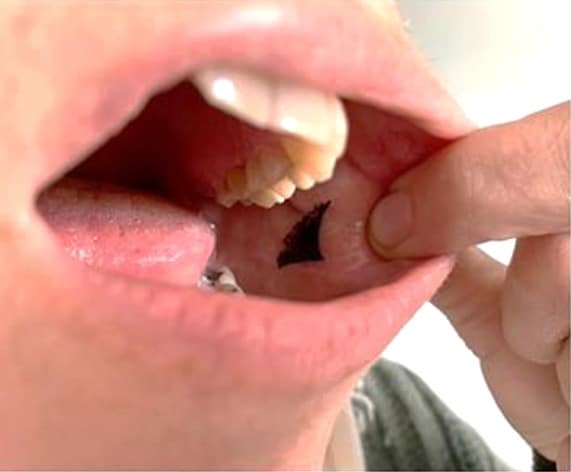According to the American Diabetes Association, approximately 6 million Americans use insulin to help control their diabetes, either because their bodies don’t make the hormone (Type 1) or don’t respond well to what they do make (Type 2). People primarily take insulin by injecting themselves with pens or syringes, or they have semi-permanent pumps implanted. These methods are invasive and uncomfortable, and they require a safe needle or biohazard disposal and sterile conditions.
Researchers have explored other ways to deliver insulin through the skin, such as gel-like lotions. But the skin is too good of a barrier, and drugs move into the body slowly. In contrast, the membrane lining the inside of the mouth is very thin, about one-quarter the thickness of skin, making it a potential place for drugs to easily enter the bloodstream. So, Sabine Szunerits and colleagues wanted to see if a material they had previously developed — a polymer fiber mat that is activated by heat to release drugs — could attach to the cheek’s lining and deliver insulin.
The researchers first soaked small squares of a nanofiber mat, made from electrospun fibers of poly(acrylic acid), β-cyclodextrin, and reduced graphene oxide, in a solution with insulin for three hours. Then the team applied the insulin-loaded patches onto cheek linings and corneas from pigs. Heating the material with a near-infrared laser for 10 minutes to 122F activated the material and released insulin into the two types of membranes several times faster than through the skin.
In addition, the researchers placed the patches in vivo inside the cheeks of three insulin-dependent pigs. The cheek linings showed no irritation or visual changes from the laser’s heat. As soon as the material was activated, the pigs’ blood sugar levels declined. Simultaneously, the animals’ plasma insulin levels increased, which the researchers say is proof-of-concept that this preliminary platform is efficient at getting insulin into the bloodstream.
Finally, six human volunteers placed a placebo version of the patch inside their cheeks, saying that it felt comfortable over a two-hour period. The researchers say their next step is to conduct further preclinical studies of the prototype on animal models.
The authors acknowledge funding from Centre National de la Recherche Scientifique (CNRS) of France, the University of Lille, the i-SITE foundation of the University of Lille, the Hauts-de-France region, the CPER “Photonics for Society” and the European Union’s Horizon 2020 Research and Innovation Staff Exchange (RISE) Marie Skłodowska-Curie Actions.




